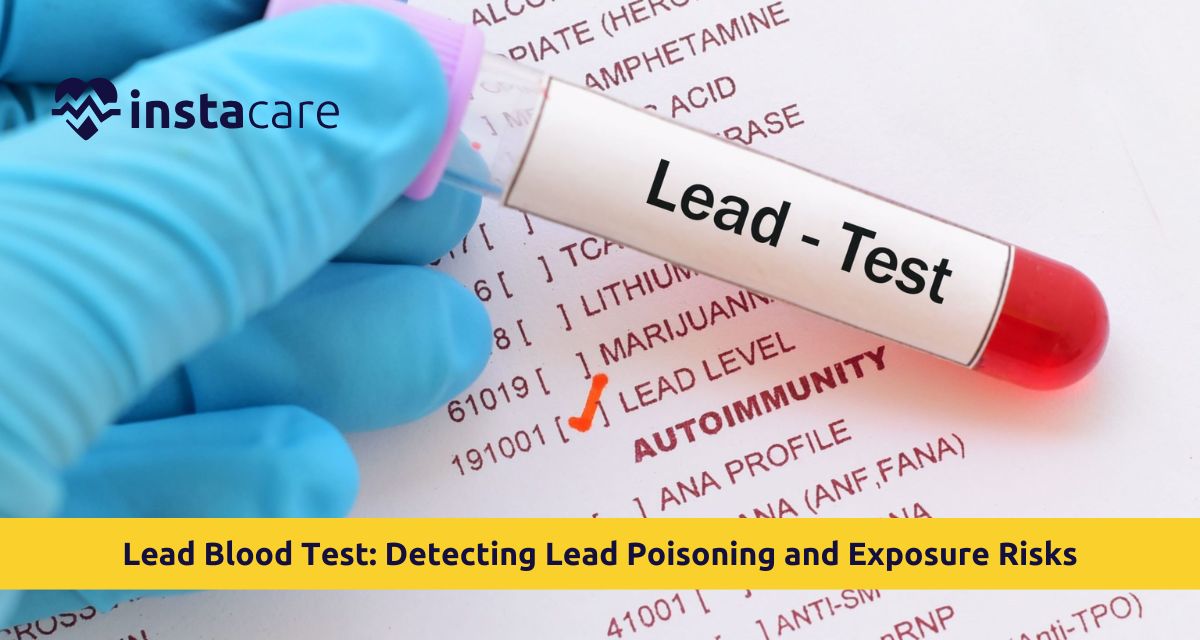What is a Lead Blood Test?
A Lead Blood Test or blood lead level test is a test for the amount of lead in the blood. It is a specific heavy metal blood test taken for lead poisoning test. Lead is a poisonous substance that can build up in the body over time and cause multiple complicacies to the health. The test is simple and entails drawing a small sample of blood from a vein or finger prick, especially in children.
This is the gold standard for diagnosis of lead exposure and lead toxicity symptoms. It is ordered regularly when a patient presents with high lead levels symptoms or lives in an environment that is known to contain lead contamination. A Lead Blood Test is helpful for early diagnosis and treatment of lead exposure and provides useful information for treatment planning and prevention.
Why is the Lead Blood Test Done?
There are a number of reasons that a test for lead poisoning is performed. It is most often done in the following situations:
Lead Test in Children
Children are more likely to become lead poisoned because their bodies are still developing and they have habits such as putting things in their mouth. It is most often recommended to do lead test for children between 1 and 2 years old, particularly if they live in homes with older buildings with lead-painted roofs on them.
lead poisoning in toddlers may result in developmental delay, learning disorders, irritability, and drowsiness.
Occupational Lead Exposure Testing
Working adults in occupational lead exposure testing settings, like battery manufacturing, construction, smelting, and plumbing, are exposed to lead. Occupational lead exposure tests have to be done as a measure to screen and prevent chronic lead poisoning in these working adults.
Lead Test in Pregnancy
Pregnant females can be screened for lead in the event that they have a history of exposure. It is important to do lead test in pregnancy since lead can easily traverse across the placenta and affect fetal development, resulting in an increased risk of miscarriage or preterm delivery.
Lead Exposure Diagnosis
All individuals who come in with suspected high levels of lead symptoms such as headache,
joint pain, memory impairment, or stomach ache can be advised to have a lead blood test. It is also used while giving lead exposure diagnosis when exposures through environment or work are known.
How to Prepare for a Lead Blood Test?
It's quite simple to prepare for a blood test to determine your blood lead level. It's not a fasting test, and little out of the usual is usually required. But there are a few things to remember:
Clothing
Wear a short-sleeve shirt or an easy-roll sleeve top, particularly if the blood test is to be performed in your arm.
Medication Disclosure
Inform your physician about any prescription or over-the-counter medications or supplements you are taking. Some iron supplements and other minerals will impact absorption of heavy metals or test results.
Avoid Recent Chelation Therapy
In case you recently had chelation therapy, which is given to cure lead poisoning, inform your physician because it will interfere with the accuracy of the test.
Lead Blood Test Procedure
The procedure of a lead blood test is simple and will take only a few minutes. The procedure entails:
- The doctor will clean the area where the blood will be drawn, usually the arm.
- A needle is inserted into the vein to collect the sample of blood.
- Finger prick is an acceptable option when drawing blood from babies or toddlers.
- The sample must be labeled and sent to a laboratory for testing.
- Mild bruising or pain at the site of venipuncture may occur, but serious complications are rare.
Read More; Alanine Aminotransferase (SGPT) Test
What to Expect After the Lead Blood Test?
After the blood test is done, you may usually resume activity immediately. The following is what to expect:
Post-Test Care
Minimal care is needed post-test. Keep the puncture site in place securely to prevent bleeding and use a bandage if necessary. Avoid heavy lifting with the injured arm for two hours.
Side Effects
Most people have no side effects. Some feel dizzy, bruise, or experience brief tenderness at the injection site. Children will cry for a few minutes but will be fine in a short time.
Follow-Up
Based on your test results, your doctor can request further testing, treatment, or prevention, especially if levels are elevated.
Interpreting Lead Blood Test Results
Normal Blood Lead Levels
In children: Less than 5 mcg/dL is usually alright.
In adults: Less than 10 mcg/dL is usually safe.
No safe normal lead levels in blood exists, though, especially in children.
Symptoms of High Lead Levels
More significant levels of lead will produce the following symptoms:
- Abdominal cramping
- Constipation
- Weakness and fatigue
- Irritability
- Muscle and joint pains
- Difficulty with memory and concentration
For a positive result with high levels, treatment for lead poisoning may involve:
- Chelation therapy
- Removal of the source of exposure
- Nutritional supplements (such as ingestion of iron, calcium, and vitamin C)
Conditions Diagnosed with Lead Blood Test
Lead blood test is employed in the diagnosis of numerous varied conditions and situations of lead toxicity.
- Acute lead poisoning
- Chronic lead poisoning
- Lead poisoning due to exposure to contaminated environment
- Occupational exposure in factories and industries
- Lead poisoning symptoms in toddlers and children
- Prenatal exposure in pregnant women
Lead Blood Test vs Mercury Blood Test
Whereas the lead blood test for toxins is for identifying lead toxicity, mercury blood tests are to determine exposure to mercury. Both are heavy metal blood test and can be ordered together if more than one metal exposure is suspected. The biggest difference is in what is causing the exposure and the symptoms:
Lead exposure would be most likely from paint, dust, water pipes, and working in a factory. Mercury poisoning is most commonly after consumption of contaminated fish or occupational exposure to chemicals in industry. Both tests play a crucial role in the diagnosis of most types of toxic metal storage in the body.
Lead Blood Test Cost in Pakistan
The test may be between PKR 2,500 and PKR 5,000.
There may be some free lead screening provided in government centers or NGOs to the kids living in high-risk communities.
You will need to call local labs or hospitals to get the latest price and insurance coverage.
Book lab tests from the
best-certified labs in Lahore, Karachi, Islamabad, and all major cities of Pakistan through
InstaCare, and get a discount of up to 35%. For assistance, call our helpline at 03171777509 to find the right lab test for your health needs.

